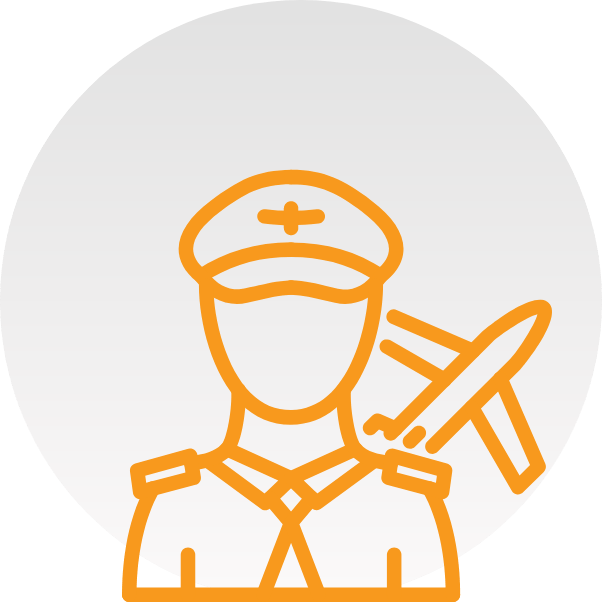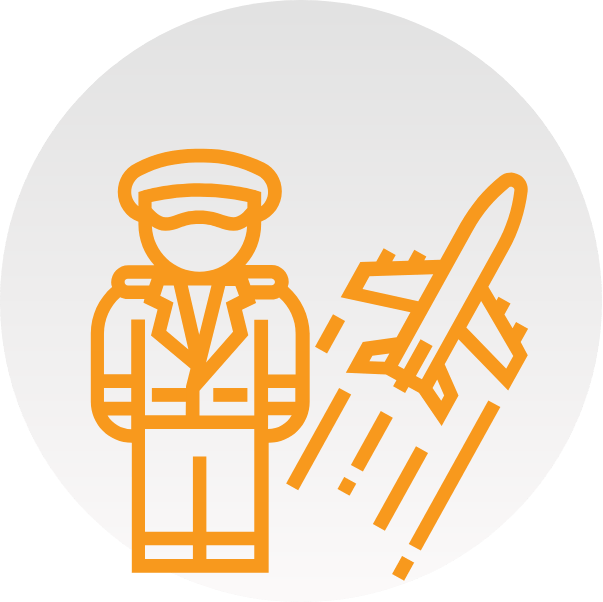Rotor Transition Curriculum: A Closer Look
Examining AeroGuard’s Rotor Transition Program curriculum in greater detail.
Rotor Transition Program Overview
AeroGuard’s Rotor Transition Program has been built around taking fully rated helicopter pilots and getting them ready for a career as a fixed wing commercial pilot in as little as 4 months. The program is focused on getting you everything you need to obtain an Airline Transport Pilot (ATP) Certificate in the category and class of Airplane Multi-Engine land, which is as follows:
- Commercial pilot certificate in airplane multi-engine land with instrument rating
- 250 total hours of airplane PIC time
- 50 hours in airplane multi-engine land aircraft of which up to 25 hours can be completed at the airlines
AeroGuard’s Rotor Transition Program is specifically designed to build on a helicopter pilot’s knowledge and experience, and get them to the commercial airlines as quickly and safely as possible to maximize their career earning potential.
To do this, our curriculum is organized differently than you might find at other flight schools, but in our experience it’s the most reliable way to transition and prepare a student for a career as a commercial, fixed wing pilot.
Rotor Transition Certificates and Ratings
The initial training component of the Rotor Transition Program is built to be finished in approximately 3 months, with 1 month building a strong foundation in the private pilot stage, 1 month in the instrument stage and 1 final month covering the commercial multi-engine stage and dual crew time building. This timeline can vary depending on factors such as plane maintenance, weather, student performance and others.
Step 1
PPL Conversion

Private Pilot License: The First Certification
For all students, both RTP and those with zero experience, week 1 of the program is dedicated to ground school, where students will learn about weather, aircraft performance, pre-flighting, risk assessment, decision making and more. For experienced RTP pilots they will not only refresh their skills in many of these areas, but also learn about AeroGuard specific operations, procedures and fixed wing checklists.
After a week of ground training, the remaining weeks of the students’ training focuses on the PPL conversion. In the first week of this Private Pilot course, the focus is on the core skills of fixed wing flight including familiarization of the controls, flight instruments, traffic patterns, steep turns, stalls and more.
After the first week of transferring these skills from the rotor wing, you will then practice these skills working with your instructor on Cross Country flights in both day and night conditions.
Into your third week of the Private Pilot Conversion you should now have mastered these basic skills and been signed off for solo flight by your instructor. The next four flights will then be four cross country solo flights, where you will hit the FAA requirements, including 10 hours of total solo time, and all necessary take offs, landings, and night flights.
Finally, it’s time to prepare for a stage check oral and flight to confirm your skills prior to checkride, and then approximately a month in the program you will be a private fixed wing pilot, but more importantly, you are now airplane rated and will be logging PIC time quickly in all your single engine missions!
Step 2
Instrument Rating

Instrument Rating: Building Proficiency
Immediately following your PPL checkride, in the second month of the Rotor Transition Program, students begin instrument training, which lasts for approximately the next month of training.
This stage of training starts with the first two weeks where students will learn to fly using their instruments alone, practicing maneuvers such as constant rate climbs and descents, standard-rate turns, constant angle of bank turns, and more. Students will then move into practicing holding procedures, DME arcs, instrument approach procedures, missed approach procedures, partial panel operations and other instrument maneuvers.
Following this stage of training, students will then complete two additional cross countries with their instructor, where they will also prepare for their stage check and checkride. Following the successful completion of these flights, after approximately two months into their total program, students will then take their IR checkride.
Step 3
Commercial Multi

Commercial Multi-Engine Rating: Bringing it All Together
Last, but not least, having gained their PPL and instrument rating, students will then move into the final stage of training for their commercial multi-engine certificate. In this stage, students will transition to our Piper Seminole, introducing the multi-engine concepts, but on a similar platform to the Piper Archer that has been used previously.
In the first week of training, students will learn such things as power-on and power-off stalls, slow flight, steep turns, engine failure during different phases of flight, VMC demonstration, drag demonstration, maneuvering with one engine inoperative, instrument approach with both engines operating and much more.
After learning the basics of multi-engine flight, students will then move into cross country flights for their second week of training in both day and night conditions.
Lastly, in their third week of CPLME training, students will meet their final requirements for their checkride, finalizing any maneuvers and gaining 10 hours of PDPIC (Performing Duties of Pilot In Command) time in the multi-engine plane. After a total of three months in the program students will then be ready for their last oral stage check, flight stage check, and then their FAA checkride to be a certificated Multi-Engine Commercial Pilot.
Time Building to ATP Requirements
In addition to having the Commercial Pilot License in Multi-Engine Airplane Land with Instrument Rating, to be eligible for the commercial airlines and gain their ATP certificate, students will also require 250 hours of fixed-wing PIC time. This requirement is an FAA minimum, however, and as students are evaluating their options, they would consider the best way to stand out in the hiring process at their future airline. There are several ways AeroGuard students can get this time;
- Graduated students with their CPLME can work for other commercial operations prior to the airlines, such as charter operations and 135 carriers.
- Students can buy or rent a plane, perhaps sharing time with another pilot
- Students can complete their CFI and train students – Recommended
The CFI route is recommended for students to not only meet the FAA minimum requirement, but also stand out in the hiring process. By training others to learn how to fly, you are able to prove that you not only made the transition from helicopter to fixed wing, but that you mastered the skill to the point that you can train others, setting you up for a successful career going forward.
Success in the Rotor Transition Program
AeroGuard’s Rotor Transition Program is geared to help students begin a successful career with the airlines. Throughout the program, you will gain the knowledge and skill necessary to transition to fixed wing, completing the PPL, IR and CPLME ratings with stage checks to ensure you’re prepared to not only the FAA standard, but the AeroGuard standard.
At AeroGuard, we provide students with the resources they need for their own mastery of the knowledge imparted throughout the program. Though the Rotor Transition Program is built on a 3-month track, you will complete the program with the progression of your own skills. This timeline can also vary depending on other factors, such as plane maintenance and weather.
To learn more about the Rotor Transition Program, please fill out the form below to be connected with an Enrollment Advisor.

